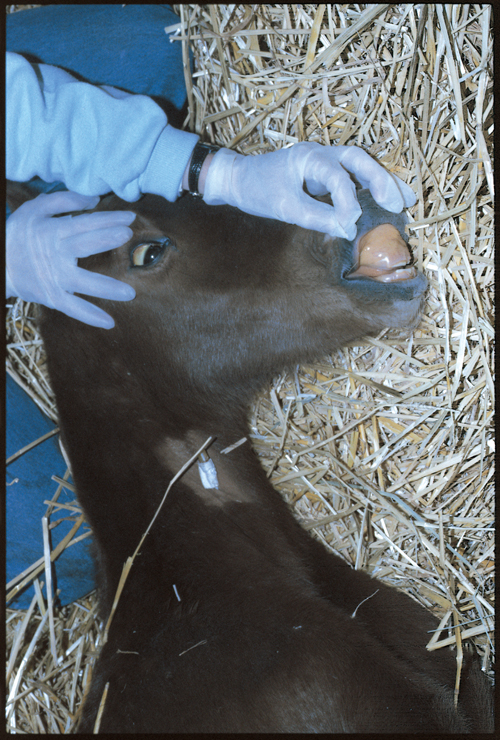Difference between revisions of "Equine Internal Medicine Q&A 09"
Jump to navigation
Jump to search
Ggaitskell (talk | contribs) |
|||
| Line 19: | Line 19: | ||
*Hypovolaemic shock secondary to the rapid lysis of red blood cells and their functional masses as vascular expanders. <br><br> | *Hypovolaemic shock secondary to the rapid lysis of red blood cells and their functional masses as vascular expanders. <br><br> | ||
*Loss of oxygen carrying capacity from the lysed red blood cells. <br><br> | *Loss of oxygen carrying capacity from the lysed red blood cells. <br><br> | ||
| − | *The development of kernicterus. The increasingly elevated levels of bilirubin | + | *The development of kernicterus. The increasingly elevated levels of bilirubin within the bloodstream can cross the immature blood–brain barrier in the foal and result in chemical toxicity to the brain. The brain damage can be permanent and be represented by persistent seizures or maladjustment. |
|l2=Neonatal Isoerythrolysis#Clinical Signs | |l2=Neonatal Isoerythrolysis#Clinical Signs | ||
</FlashCard> | </FlashCard> | ||
Latest revision as of 19:39, 23 December 2014
| This question was provided by Manson Publishing as part of the OVAL Project. See more Equine Internal Medicine questions |
A 12-hour-old foal is presented as weak and lethargic. The heart rate is 96bpm, and the mucous membranes are pale and jaundiced. Laboratory evaluation reveals a haematocrit of 10%, a haemoglobin concentration of 34g/l and a total protein of 52g/l.
| Question | Answer | Article | |
| What is the most likely diagnosis? | Neonatal isoerythrolysis. |
Link to Article | |
| What are the three potential clinical entities that could lead to the death of this foal? | Three potential clinical entities that could lead to the death of this foal are:
|
Link to Article | |
